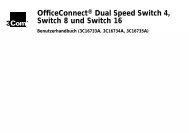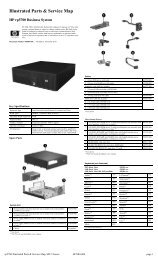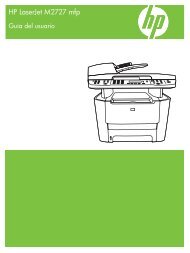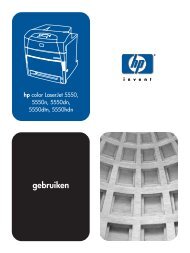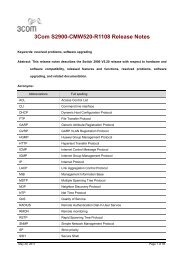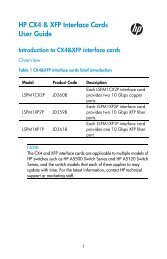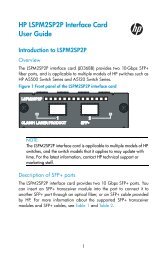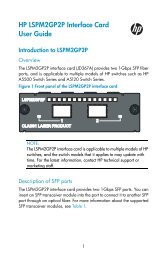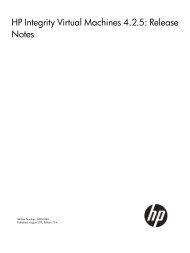HP Jetdirect ew2500 802.11g Wireless Print Server - Hewlett Packard
HP Jetdirect ew2500 802.11g Wireless Print Server - Hewlett Packard
HP Jetdirect ew2500 802.11g Wireless Print Server - Hewlett Packard
You also want an ePaper? Increase the reach of your titles
YUMPU automatically turns print PDFs into web optimized ePapers that Google loves.
Encryption<br />
of available channels authorized for use may be restricted based on your location (see Radio<br />
characteristics on page 42).<br />
● If the print server is powered on and discovers a wireless network whose SSID (network name) is<br />
also “hpsetup”, it will automatically adjust its channel to match that network.<br />
● If the print server is reconfigured for Infrastructure mode, it will automatically adjust its channel to<br />
match the Access Point.<br />
<strong>Wireless</strong> networks use radio signals for network communications, which can be easily monitored by<br />
someone eavesdropping on the network. To deter eavesdropping and to help ensure data privacy,<br />
encryption of wireless communications may be used.<br />
For <strong>HP</strong> <strong>Jetdirect</strong> print servers in their factory-default state, encryption of wireless communications is<br />
disabled. However, the print servers support static WEP and popular dynamic encryption protocols.<br />
NOTE: <strong>Wireless</strong> performance may be reduced when using encryption keys due to the additional<br />
processing time required.<br />
Static Encryption. WEP encryption protocols were developed to provide a basic level of data privacy.<br />
WEP protocols use static encryption keys to encrypt and decrypt wireless communications.<br />
NOTE: WEP encryption levels are sometimes called 40-bit, 64-bit, 104-bit, or 128-bit encryption. Both<br />
40-bit and 64-bit encryption are really the same, as are 104-bit and 128-bit encryption. When entering<br />
WEP keys, the user specifies 40 bits for 64-bit encryption, or 104 bits for 128-bit encryption. An additional<br />
24 initialization vector (IV) bits are automatically added for a total of 64 bits and 128 bits, respectively.<br />
In this guide, we will use “40/64-bit” and “104/128bit” to specify these WEP encryption levels.<br />
For basic encryption, static WEP keys are configured on each device on the wireless network. WEP<br />
keys are considered static because they remain the same unless manually reconfigured. For example,<br />
on a typical Infrastructure mode network that uses static WEP encryption, a change to the WEP key on<br />
an Access Point will require a manual change to the WEP key on each wireless device.<br />
<strong>HP</strong> <strong>Jetdirect</strong> wireless print servers support configuration of up to four static WEP keys, for either 40/64bit<br />
or 104/128-bit encryption.<br />
Dynamic Encryption. For advanced encryption methods, dynamic encryption protocols are used. For<br />
dynamic encryption protocols, encryption keys are automatically changed at routine intervals making<br />
them difficult to decipher.<br />
Dynamic encryption protocols, such as dynamic WEP and wi-fi protected access (WPA/WPA2), provide<br />
a more secure wireless environment.<br />
When configured for WPA/WPA2–Personal authentication, <strong>HP</strong> <strong>Jetdirect</strong> print servers use WPA<br />
encryption.<br />
Infrastructure mode<br />
Infrastructure mode is a wireless network topology where all wireless communications go through an<br />
Access Point. Infrastructure mode is called a Basic Service Set (BSS), and sometimes referred to as<br />
“enterprise mode.” On Apple networks, Infrastructure mode is called Airport Network mode. When set<br />
6 Chapter 1 Introduction ENWW






